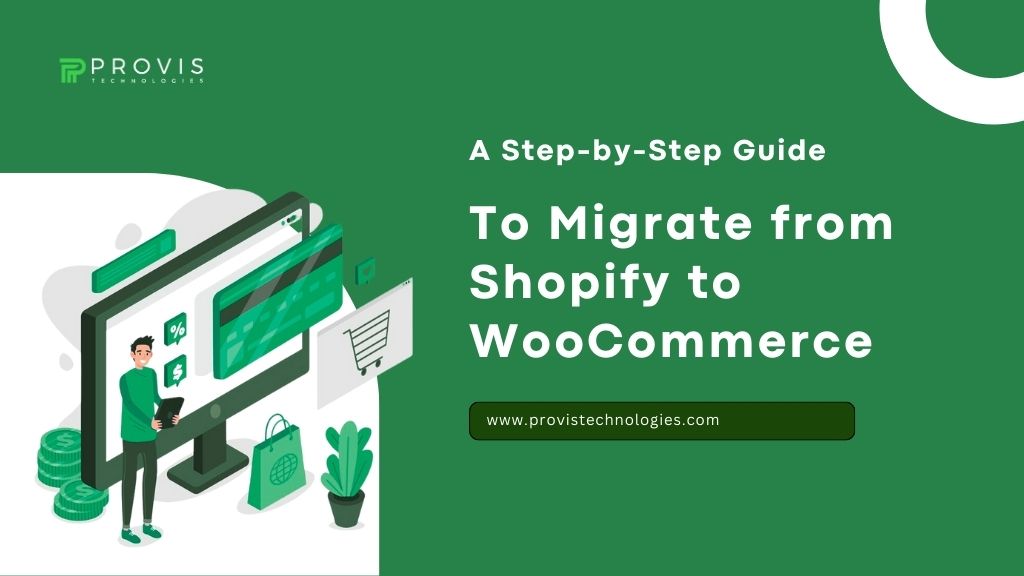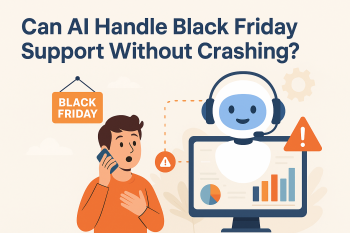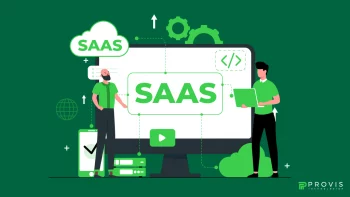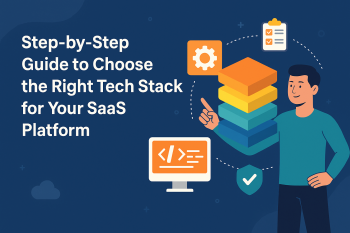Introduction
World’s one of the best e-commerce platforms – Shopify & WooCommerce – are almost equally used across the globe. Undoubtedly, Shopify provides ease of use – however, those who need control & customization over their e-store prefer WooCommerce. Let’s dive deep into these and learn how to migrate from Shopify to WooCommerce.
Overview of Shopify & WooCommerce platforms
Shopify & WooCommerce are popular e-commerce platforms. Shopify is a hosted solution providing all the necessary tools and hosting for running an online store. WooCommerce, on the other hand, is a WordPress plugin that allows you to turn your WordPress website into a fully functional e-commerce store.
Why should you consider migrating from Shopify to WooCommerce?
There could be several reasons why someone might want to migrate from Shopify to WooCommerce. Some common reasons include:
- greater flexibility & customization options
- lower transaction fees
- access to a broader range of plugins & extensions, and
- full control over your virtual store’s data & functionality.
Pre-Migration Preparation
Assessing your current Shopify store
Before starting the migration process, it’s crucial to thoroughly analyze & make note of your current Shopify store. This includes evaluating your product listings, customer information, order history, and other relevant data.
Setting migration goals & objectives
Define clear goals & objectives for the migration. This could include improving website performance, expanding product offerings, or reducing operating costs.
Backup your Shopify store data
It’s essential to create backups of your Shopify store data to avoid any loss of information during the migration process. This includes backing up product listings, customer information, order history, and any other data you want to transfer to WooCommerce.
Create WooCommerce’s development environment
Setting up a separate development environment for WooCommerce allows you to test the migration process without affecting your live store. This ensures that everything is working correctly before making the switch.
Exporting Data from Shopify
Exporting product data
Export all your product listings from Shopify, including product names, descriptions, prices, and images.
Exporting customer data
Export your customer information from Shopify, including names, email addresses, and shipping addresses.
Exporting order data
Export your order history from Shopify, including order details, payment information, and shipping information.
Exporting other relevant data
If you have additional data on your Shopify store, such as blog posts or static pages – make sure to export them.
Setting Up WooCommerce
Installing WooCommerce plugin
Install the WooCommerce plugin on your WordPress site to turn it into an e-commerce store.
Basic configuration settings
Configure basic settings in WooCommerce, such as currency, shipping options, and tax rates – according to your business needs.
Installing necessary extensions & plugins
Install any additional extensions and plugins needed for adding features like payment gateways, shipping options, and product variations.
Choosing a WooCommerce-compatible theme
Choose a theme for your WooCommerce store that is compatible with WooCommerce and suits your brand aesthetic and functionality needs.
Don’t Miss:- Wix or WooCommerce A Complete Guide to Choose the Right E-commerce Platform for You
Importing Data to WooCommerce
Importing product data
Import the product listings you exported from Shopify into WooCommerce, ensuring that all product information is transferred accurately.
Importing customer data
Import the customer information you exported from Shopify into WooCommerce to ensure customer profiles are created correctly.
Importing order data
Import the order history you exported from Shopify into WooCommerce, ensuring that all past orders are recorded accurately.
Importing other relevant data
If you exported any additional data from Shopify, such as blog posts or static pages, import them into WooCommerce. Following a step-by-step approach makes it easy to migrate from Shopify to WooCommerce. If you understand what’s here, you know how to migrate from Shopify to WooCommerce by now.
Design & Customization
Customizing your WooCommerce store layout
Customize the layout and design of your WooCommerce store to create a unique and branded shopping experience for your customers.
Configuring payment gateways
Set up payment gateways in WooCommerce to allow customers to make purchases using their preferred payment methods.
Setting up shipping options
Configure shipping options in WooCommerce to offer customers various shipping methods and rates based on location.
Adding additional functionalities with plugins
Enhance the WooCommerce functionality by installing additional plugins to add features such as product reviews, social media integration, and marketing tools.
Testing Your WooCommerce Store
Testing product pages, checkout process, and payment gateways
Thoroughly test all aspects of your WooCommerce store, including product pages, the checkout process, and payment gateways – to ensure a smooth user experience.
Checking for data accuracy & completeness
Verify that all data imported into WooCommerce, including product listings, customer information, and order history, is accurate and complete.
User experience testing
Test the overall user experience of your WooCommerce store, including navigation, search functionality, and responsiveness – to ensure it meets customer needs.
Related Blog:- A Comprehensive Guide to How to Migrate from
Redirecting Traffic & SEO
Setting up 301 redirects from Shopify to WooCommerce URLs
Redirect traffic from your Shopify store to your new WooCommerce store using 301 redirects to maintain search engine rankings and ensure a smooth customer transition.
Updating internal links & navigation
Update the website’s internal links and navigation menus to reflect the changes and ensure a flawless browsing experience for visitors.
Updating sitemap & robots.txt files
Update your website’s sitemap and robots.txt files to inform search engines about the migration and ensure the indexing of your new WooCommerce store.
Informing search engines about the migration
Notify search engines about the migration by submitting your updated sitemap and robots.txt files and requesting a re-indexing of your website.
Post-Migration Tasks
Announcing the migration to customers
Inform your customers about the migration to WooCommerce and any changes or updates they need to know.
Monitoring website performance & analytics
Monitor the performance of your WooCommerce store using analytics tools to identify any issues or areas for improvement.
Addressing any post-migration issues
Address any issues that arise after the migration, such as broken links or missing data – for a seamless transition for your customers.
Seeking feedback from customers
Gather feedback from customers and stakeholders about their experience with the new WooCommerce store and use it to make further improvements and enhancements.
Must Know:- WooCommerce vs Shopify Which is Best for Your E-commerce in 2024?
Benefits of Shopify to WooCommerce Migration
Lower Transaction Fees
Migrating from Shopify to WooCommerce can lead to significant savings on transaction fees. While Shopify charges transaction fees on top of payment processing fees – WooCommerce doesn’t charge any transaction fees, allowing you to keep more of your profits. (Source: WooCommerce)
Greater Flexibility & Customization
WooCommerce is more flexible for customization than Shopify. With WooCommerce, you have complete control over your store’s design, functionality, and data, allowing you to create a unique and personalized shopping experience for your customers. (Source: WooCommerce)
Access to a Wider Range of Plugins & Extensions
WooCommerce provides access to a vast ecosystem of plugins and extensions that can extend the functionality of your store. From payment gateways to marketing tools to shipping options, WooCommerce’s extensive library of plugins allows you to add features and capabilities that suit your business needs. (Source: WordPress)
Bottom Line
Migrating from Shopify to WooCommerce involves several steps, including preparing your Shopify store, exporting data, setting up WooCommerce, importing data, customizing your store, testing, redirecting traffic, and completing post-migration tasks. Following these steps carefully and systematically can give you a smooth transition to your new WooCommerce store and position your online business for future growth & success. We hope this step-by-step guide helps you to migrate from Shopify to WooCommerce. Also, if you need professional help, you can connect with e-commerce development companies like Provis Technologies.
FAQs
What is the difference between Shopify & WooCommerce?
Shopify is a hosted e-commerce platform that provides all-in-one solutions for building and managing online stores. WooCommerce, on the other hand, is a WordPress plugin that allows you to turn your WordPress website into an e-commerce store. While Shopify offers convenience & ease of use, WooCommerce provides greater flexibility & customization options.
Is it complicated to migrate from Shopify to WooCommerce?
Migrating from Shopify to WooCommerce can be straightforward with proper planning and execution. Following this step-by-step guide and utilizing available tools & resources can lead to a smooth Shopify to WooCommerce transition. You can always connect with top e-commerce development agencies like Provis Technologies for help with migration.
Will I lose my data when migrating from Shopify to WooCommerce?
No! You don’t lose any data when migrating from Shopify to WooCommerce when you follow proper export & import procedures. You can export your product listings, customer information, order history, and other relevant data from Shopify and import them into WooCommerce.
Do I need coding skills to set up WooCommerce?
Not really! You don’t need coding skills to set up WooCommerce. WooCommerce is designed to be user-friendly and accessible to users of all skill levels. You can easily install and configure WooCommerce using its intuitive interface and built-in settings without any coding knowledge.
Are there any additional costs associated with using WooCommerce?
While WooCommerce is free to use – additional costs may be associated with using some of its plugins, extensions, themes, or hosting services. However, you can always choose which plugins and services you want to use based on your budget and business needs.
Can I switch back to Shopify if I’m not satisfied with WooCommerce?
Yes! You can always switch back to Shopify if you don’t like or understand WooCommerce. Both Shopify and WooCommerce offer options for exporting and importing data, which you need to migrate your store back and forth between the two platforms. However, it’s essential to consider the potential time and effort involved in migration.
Written By
Author's Picks
- WooCommerce vs Shopify Which is Best for Your E-commerce in 2024?
- 22/03/2024
- Wix or WooCommerce A Complete Guide to Choose the Right E-commerce Platform for You
- 23/02/2024
- A Comprehensive Guide to How to Migrate from
- 05/03/2024
Categories
- AI for Startups
- AI in Web Development
- AI Integration
- AI Platforms
- AI Prompt
- AI Tools
- AI Trading Software
- Android App
- Android vs iOS Development
- Angular
- API
- API Development
- App
- app development
- App Idea
- App User Feedback
- Application
- Artificial Intelligence
- Audit Services
- Automotive Industry
- Awards and Recognition
- Business Consulting
- Business Website
- Chatbots
- CRM
- CRM for Financial Advisors
- Custom CRM
- Custom SaaS
- Custom Website
- Customer Service
- dashboard design
- Developing a Mobile App
- Digital Business
- E-commerce
- EMR Integration
- Finance
- Financial Advisors
- Financial Advisors
- GIT
- Health Insurance
- iOS App
- iOS App Development
- IoT Mobile App Development
- IoT Platforms
- IT Audit Services
- IT Consulting
- IT Strategies
- Java Development
- Laravel
- Lean Canvas
- Learning Management System
- Logistics Apps
- Mobile App Development
- MVP
- Native App
- News Aggregator Site
- OTT
- Outsourcing IT
- Payment Gateway
- predictive analysis
- Product Launch Strategy
- Progressive Web App (PWA)
- Prototype
- Recommender Systems
- Ruby
- SaaS
- SaaS Application
- SaaS Business
- SaaS Company
- SaaS Development
- SaaS Product
- SaaS Project
- Sales Funnel
- SEO
- Shopping Cart
- Software Development
- SSL and TLS
- Startup Checklist
- Technology
- Tetradic Color Scheme
- UI/UX Design Company
- Unit Testing
- User Flow
- User Testing
- Web Development
- Web Performance Optimization
- website Maintenance Services
- Website Migration Service
- Website Speed Optimization
- WooCommerce
- WordPress





